1 Editor's PickThe Imperial Palace and the Forbidden City
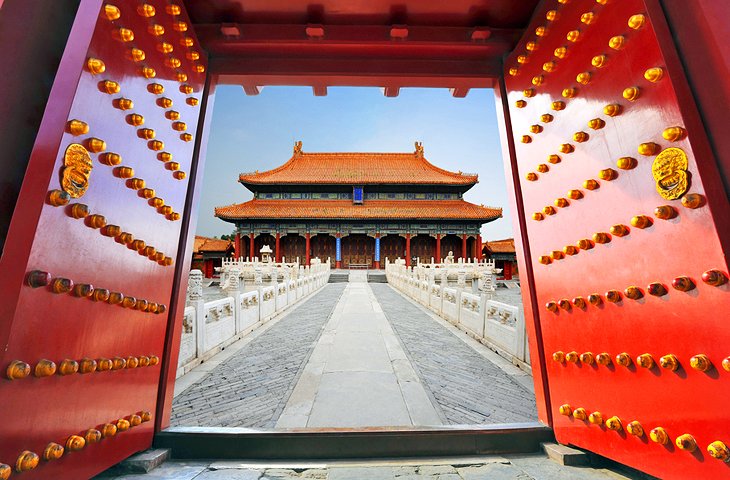
The Imperial Palace and the Forbidden City
The Imperial Palace, also known as the Forbidden City, is China's most significant building and can trace its origins back to the Yuan Dynasty of the 13th century. Its immense size is the result of enlargements made during the Ming Dynasty between 1406 and 1420 after the capital was transferred here from Nanking. All told, this beautiful palace has been home to 24 Ming and Qing Emperors, earning its nickname of the Forbidden City due to the fact ordinary citizens weren't allowed access. The complex covers 720,000 square meters, all of it surrounded by a 10-meter-high wall with towers in the four corners and a 50-meter-wide moat, and is divided into an area used for ceremonial and administrative purposes, as well as the private quarters used by the Emperor and his concubines. Highlights include the Meridian Gate, built in 1420; the Golden River Bridges, five richly decorated white marble bridges; the 35-meter-high Hall of Supreme Harmony containing the splendidly decorated gilded imperial throne; the Hall of Preserving Harmony, which functioned as the Emperor's banquet hall; and the Hall of Military Courage, a permanent residence and private audience hall for the emperors. Also of interest is the nearby Imperial College, founded in 1287 by Kublai Khan and only closed in 1900.
Official site: www.dpm.org.cn/index1280800.html
2 Tian'anmen Square
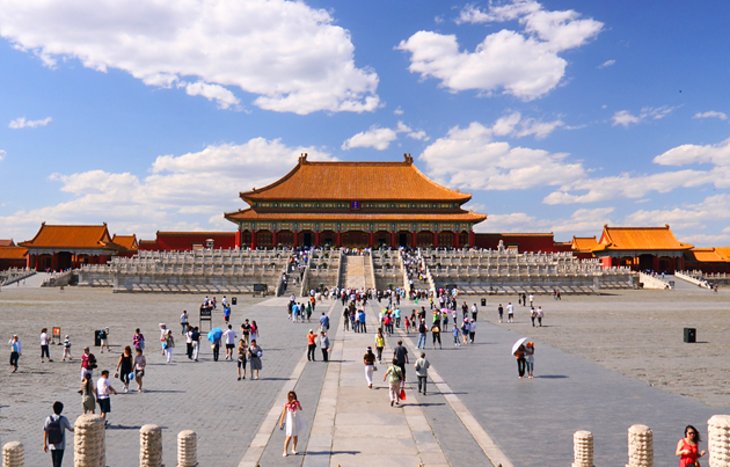
Tian'anmen Square
Tian'anmen Square (the Square of Heavenly Peace) is the world's largest inner-city square, designed to hold a million people and built to celebrate the 10th anniversary of the Chinese Republic in 1958. Considered the center of communist China, the square's symbolic importance dates back to May 4th, 1919, when students demonstrated against the Chinese provisions of the Treaty of Versailles. Highlights include the Monument to the People's Heroes (Rénmín Yīngxióng Jìniànbēi), a 38-meter tall obelisk consisting of 17,000 pieces of granite and marble, and the splendid Tian'anmen Gate - the Gate of Heavenly Peace - completed in 1417 and once the main entrance to the Imperial City. Other features of note are the Museum of the Chinese Revolution with its exhibits illustrating the various stages of the Chinese revolution from 1919 and the development of the Communist Party, and the Chairman Mao Mausoleum where the body of Mao rests in a crystal sarcophagus.
Address: Dongcheng, Beijing
3 Beihai Park
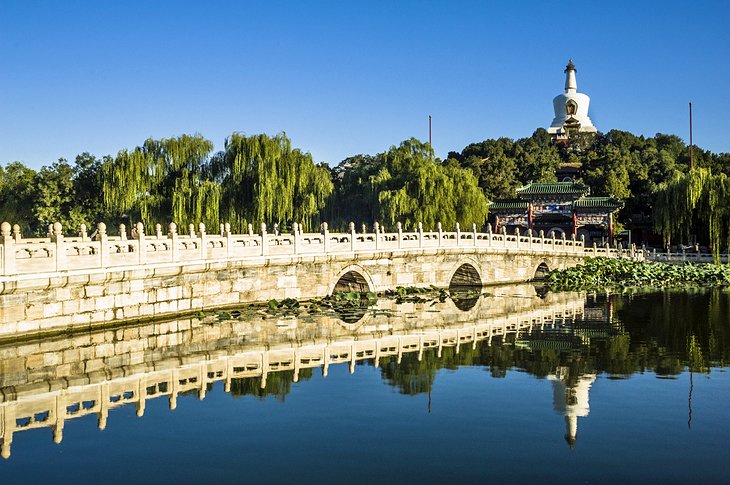
Beihai Park
Just a short distance from the Imperial Palace, Beihai Park is one of the oldest surviving imperial gardens in Beijing. Laid out at the beginning of the 10th century, this beautiful open space takes its name from nearby Lake Beihai (North Lake) and offers many good reasons to pay a visit. Among the most important structures are the Round Fort dating from the Yuan period of 1271-1368; the spectacular Hall of Enlightenment, built in 1690 and home to a one-and-a-half-meter-tall Buddha carved from a single block of white jade; and a large black jade vase from the early 12th century. Other notable features are the opulent residence of Song Qingling in which the widow of the founder of the Republic, Sun Yat-sen, lived for 18 years until her death (it's now a museum); the Living Quarters of Mei Lanfang (Mei Lanfang Guju), a famous male star of the Peking Opera who specialized in playing the role of a woman; the residence of Guo Moruo, where the famous writer and historian lived from 1963 until his death in 1978, built in traditional Chinese courtyard style; and the beautiful 17th-century White Pagoda on the Island of Exquisite Jade.
Address: 1 Wenjin St, Xicheng, Beijing
4 The Temple of Heaven
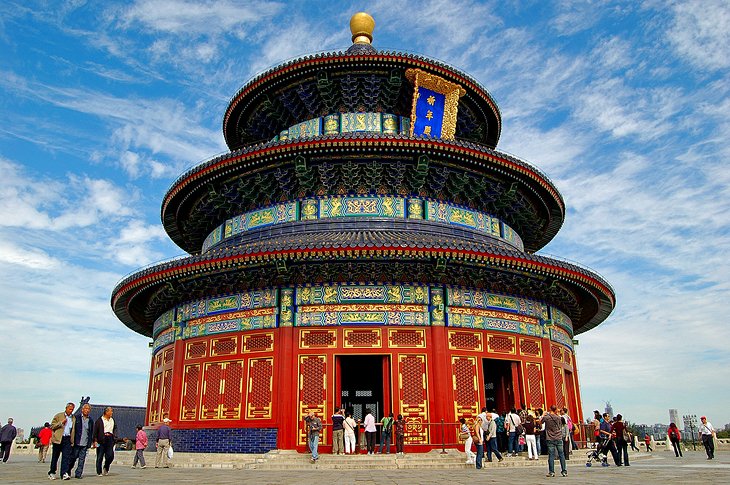
The Temple of Heaven
The Temple of Heaven (Tiāntán) dates back to 1420 and incorporates a group of some of Beijing's most sacred buildings. Surrounded by lush vegetation, these lovely old temples and shrines are set out in two sections - one rectangular, the other semi-circular - which together symbolize heaven and earth. It was here that, on the day of the winter solstice, the emperor would ascend the Heavenly Altar in solemn ceremony to pray for a good harvest and offer sacrifices in the brightly decorated Hall of Prayer for Good Harvests (Qinian Dian). Built in 1420 in customary Chinese fashion of wood and entirely without nails, the hall sits on a three-tier marble terrace with balustrades and a roof covered with 50,000 fine blue glazed tiles (a marble plaque on the floor represents the dragon and the phoenix stone, symbols of the emperor). Another highlight is the Hall of the Vault of Heaven (Huangqiong Yu), erected in 1530 and boasting a blue-tiled conical roof (it was used to store the ceremonial plaques of Heaven and the Officials). Be sure to also visit the temple's Echo Wall, which echoes to even the quietest of voices, an effect exaggerated by three unusual echoing stones.
Address: Dongcheng, Beijing
5 Beijing National Stadium
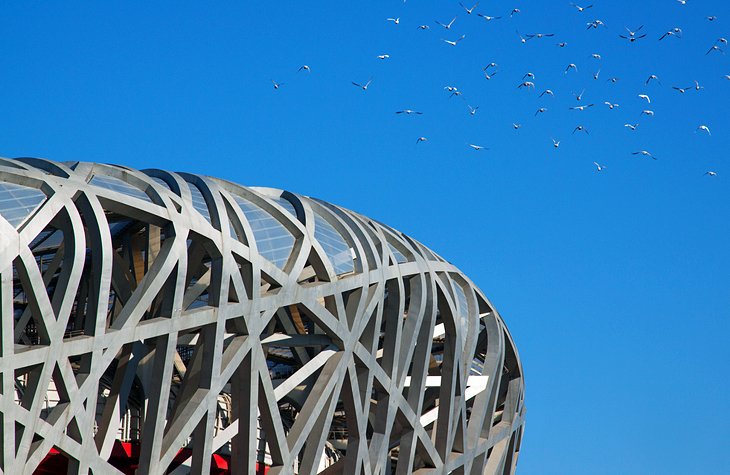
Beijing National Stadium
Recognized the world over for its role in the spectacular Summer Olympics held in Beijing in 2008, the National Stadium (Guójiā tǐyùchǎng) - also affectionately nicknamed the Bird's Nest - is well worth a visit. Built at great cost, this remarkable structure owes its unique design to the influences of traditional Chinese ceramics and has, since the Olympics, been used to host large cultural events and performances including opera, pop concerts, and football matches. In winter, it's turned into the world's largest manmade indoor ski slope. (English language and self-guided tours are available.) Another nearby attraction is the National Aquatics Center, also known as the Water Cube for its attractive night-time display that sees it lit up and looking like a giant ice-cube. In addition to being the site of Olympic swimming events, part of the building has been turned into the fun Watercube Waterpark.
6 The Lama Temple
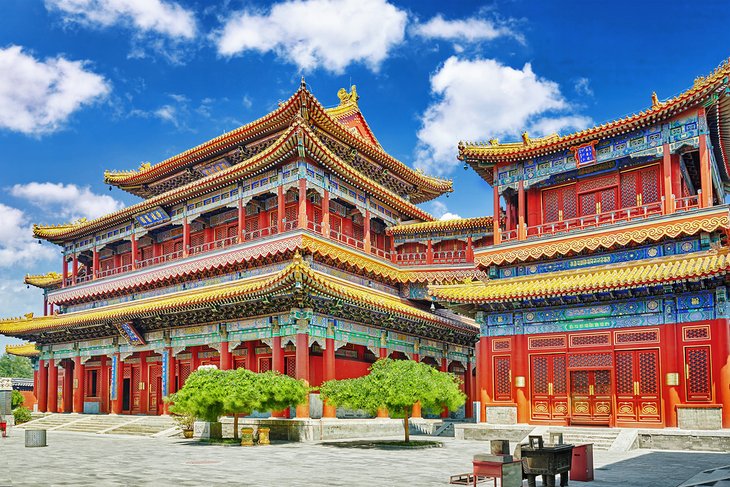
The Lama Temple
Also known as the Yonghe Temple, the Lama Temple is one of Beijing's most attractive and best-preserved temples. Completed in 1745, the building served a political purpose by giving Lamaism, the religion of the then just annexed Tibet, an official seat in the capital. Built to generous proportions and equipped with many valuable works of art, the most important feature is the Hall of the Kings of Heaven (Tian Wang Dian) with its statue of Buddha surrounded by the four kings who are provided with symbolic objects (a toad, a sword, a snake, and a shield). Also noteworthy is the statue of Weituo, the protector of Buddhism, holding an iron staff. Other important buildings include the Pavilion of the Four-tongued Stele (Yubi Ting), which houses a stele dating back to 1792 that contains the history of the Lama religion written in Chinese, Manchurian, Tibetan, and Mongolian; the Hall of the Buddhist Wheel (Falun Dian), the teaching and assembly hall of the monastery, its interior dominated by a six-meter-tall statue, two thrones, and numerous sacred manuscripts; and the largest building at the Lama Temple, the Pavilion of Four Thousand Fortunes (Wangfu Ge) with its enormous 18-meter-high sandalwood statue.
Address: 12 Yonghegong Street, Dongcheng, Beijing
7 Beijing Capital Museum
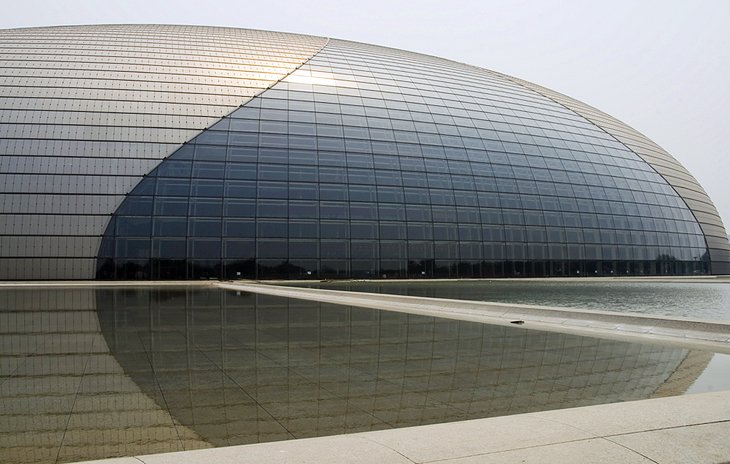
Beijing Capital Museum
Arts and culture buffs are extremely well catered to in Beijing. Of particular interest is the excellent Beijing Capital Museum, one of the country's leading art museums. Opened in 1981, the museum boasts a vast collection of artifacts including ancient items of porcelain and bronze, traditional calligraphy and artwork, along with many fine statues from Chinese and other Asian cultures. Other highlights of its collection of more than 200,000 important cultural artifacts - many originating from in and around Beijing - include the huge stele of Emperor Qian Long, weighing more than 40 tons, standing nearly seven meters in height, and containing ancient scripts and writings. Another modern Beijing landmark worth visiting is the National Centre for the Performing Arts (Guójiā dà jùyuàn), also nicknamed the Giant Egg. Considered one of the best opera houses in Asia, the building opened in 2001 and has since hosted many of the world's leading operatic performers (it's particularly worth visiting if you're able to take in a performance).
Address: 16 Fuxingmen Outer St, Xicheng, Beijing
8 Beijing Ancient Observatory
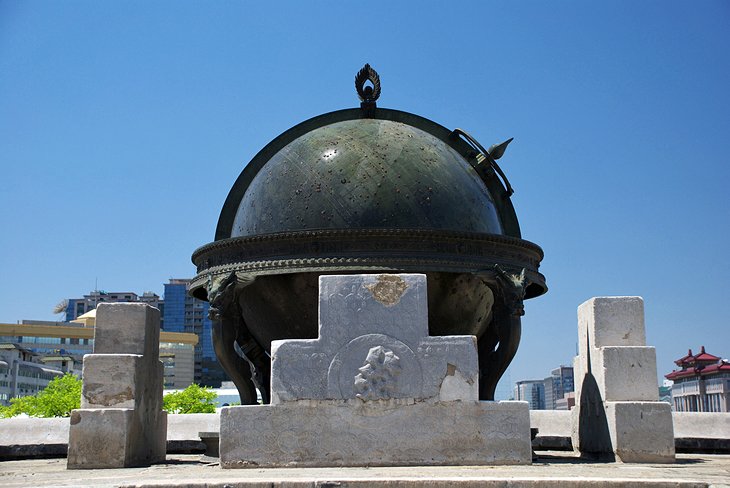
Beijing Ancient Observatory
Completed in 1442, the fortress-like Beijing Ancient Observatory (Běijīng Gǔ Guānxiàngtái) lies in the east of the city near the station quarter and was continuously in use right up until 1929. It is widely considered one of the oldest such observatories in the world. Among the 10,000-square-meter facility's many fascinating old pre-telescopic instruments are a celestial globe dating from 1673 and an 18th-century armillary globe depicting the planets (at least those that were known at the time), along with a number of large bronze instruments designed by the Jesuit missionary Ferdinand Verbiest. Once part of the old city walls, this tall brick tower serves as a museum offering a glimpse into the surprising amount of knowledge of the stars and planets that existed at the time.
Address: 2 Dongbiaobei Hutong, Dongcheng, Beijing
9 The Fayuan Temple
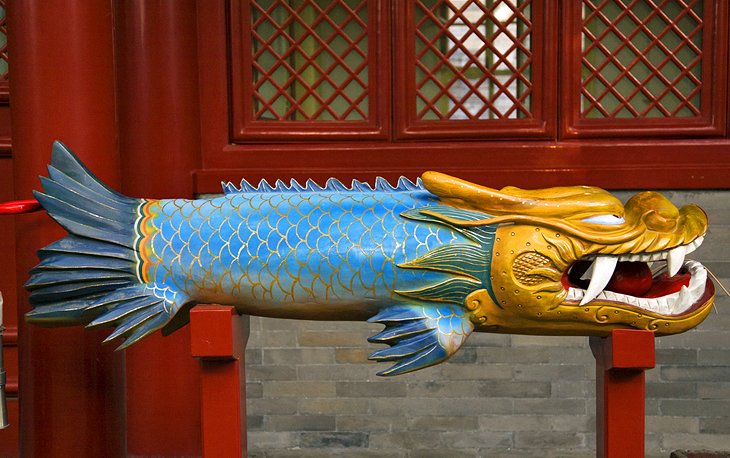
The Fayuan Temple
The Fayuan Temple (Fǎyuán Sì) - also known as the Source of Law Temple -
dates back to the year 645 AD and consists of several halls where many ancient stone inscriptions are kept, the oldest dating from the 7th century. The temple has witnessed many of Beijing's most important historic events, including serving as a prison for Emperor Huizong in the 12th century, a place of examination for the highest offices of state, as well as botanical gardens. Today, the temple is a place of worship and the seat of the Buddhist Academy, the most important educational establishment in China. Other highlights include the bell and drum towers in the first courtyard; the Hall of the Kings of Heaven with its fine statues; the Mahavira Hall housing Buddhas of the present, past, and future represented in 18 Luohan figures; and, one of the temple's most precious objects, a Han Dynasty (25-220 AD) ceramic statue in the Dabianjue Tang Hall.
Another Buddhist site worth visiting is the Zhihua Temple, dating from 1444 and one of the most important original Ming period complexes in Beijing's old town. Of particular note is the two-story Tathagata Hall (Rulai Dian), named after its statue of the transcendental Buddha (it's also known as 10,000 Buddha Hall for the many small Buddha figurines adorning the walls).
Address: 7 Fayuansi Front St, Xicheng, Beijing
10 Coal Hill Park
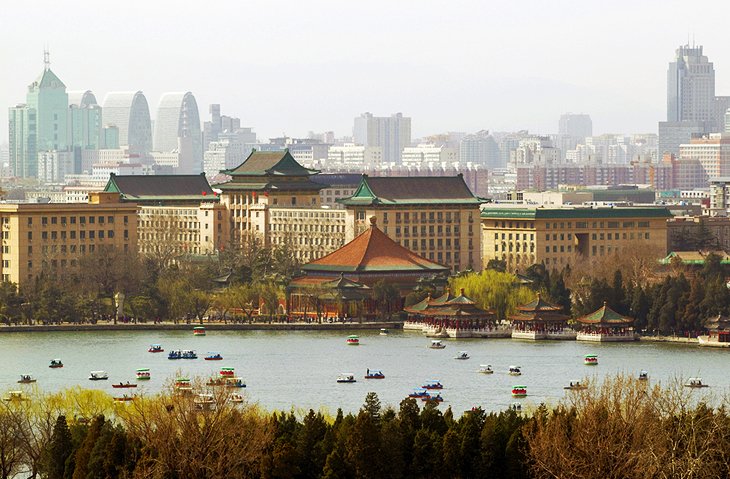
View from Coal Hill Park
Directly opposite the North Gate of the Imperial Palace, Coal Hill Park (Jingshan) offers some of the best views in Beijing, particularly over Beihai Park Lake and the Forbidden Palace. Taking its name from the coal that was once stored here for the Ming Emperors, this largely man-made hill - one of just a handful in Beijing - was started around 1416 during the construction of the Imperial Palace when the dumping of rubble from the old city wall and large quantities of soil from excavation of the moat surrounding the palace resulted in the once-low natural mound soaring in height. A highlight of a visit, in addition to the many splendid gardens and walkways, is an old acacia tree from which the last Ming emperor was supposed to have hung himself in 1644.
11 The Beijing Temple of Confucius
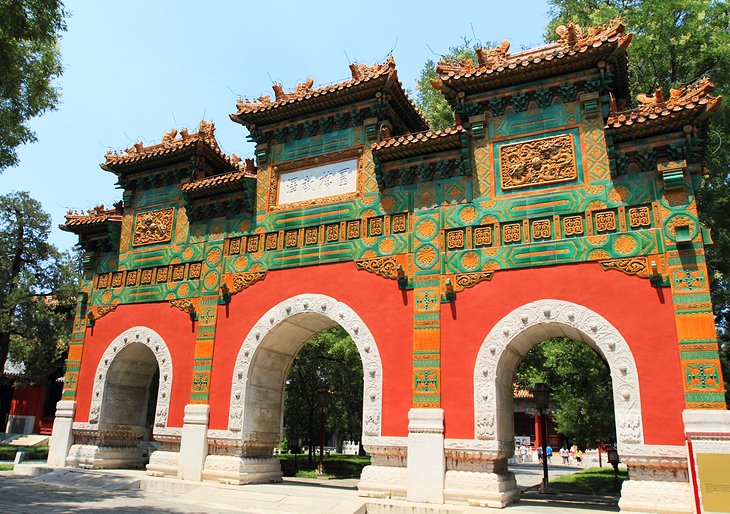
The Beijing Temple of Confucius
A short walk from the Lama Temple in a pleasant side alley spanned by ornamental gates is the Beijing Temple of Confucius, built in 1302 and dedicated to the great philosopher and teacher, Confucius, whose teachings dominated public and private life for centuries. One of China's best-known Confucius temples, the Beijing Temple once hosted many elaborate ceremonies honoring its namesake under the leadership of the emperor. The forecourt harbors 198 steles with inscriptions naming all 51,624 Confucian scholars who, after 1416, successfully passed the highest examinations of the state until abolished in 1904. A highlight is the Hall of Great Achievements (Dacheng Dian), home to numerous shrines dedicated to Confucius, his students, and other Confucian philosophers, as well as many old musical instruments and other ritual items used in the celebrations, which take place on the large terrace in front of the hall. Another religious site worth a visit for its fine exterior (non-Muslims aren't permitted to enter) is Niu Jie Qingzhen Si Mosque, built in 995 AD. Beijing's oldest and largest mosque, it's in the Muslim quarter and includes a minaret, a six-cornered moon observatory tower, and two pavilions featuring numerous steles with Chinese and Arabic inscriptions.
12 Beijing Zoo
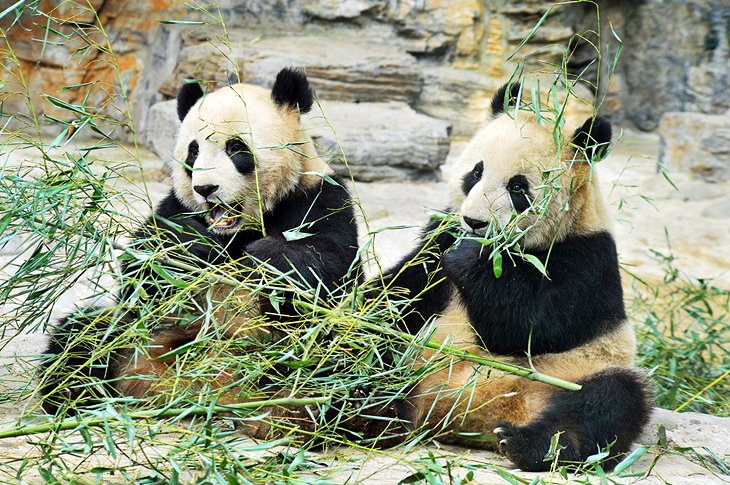
Beijing Zoo
In the northwest area of the city, the Beijing Zoo (Běi jīng dòng wù yuán) covers an area of more than 220 acres and was established in 1906, making it one of the oldest zoos in China. Boasting an impressive collection of close to 15,000 animals from 1,000 species - the largest in the country - the zoo includes many rare native species such as South China tigers, snow leopards, golden snub-nosed monkeys, and pandas, along with some not so rare such as the red-crowned crane and Pere David's deer. Species from across the world are also well represented and include elephants, lions, and jaguars, all spread around grounds that closely resemble classical Chinese gardens, complete with dense woods, meadows, rivers, streams, and ponds, along with a number of pleasant gazebos and terraces. The zoo also has a well-stocked aquarium.
Address: 137 Xizhimen Outer St, Xicheng, Beijing

No comments:
Post a Comment